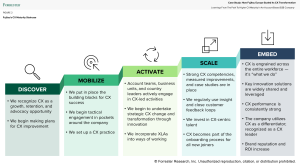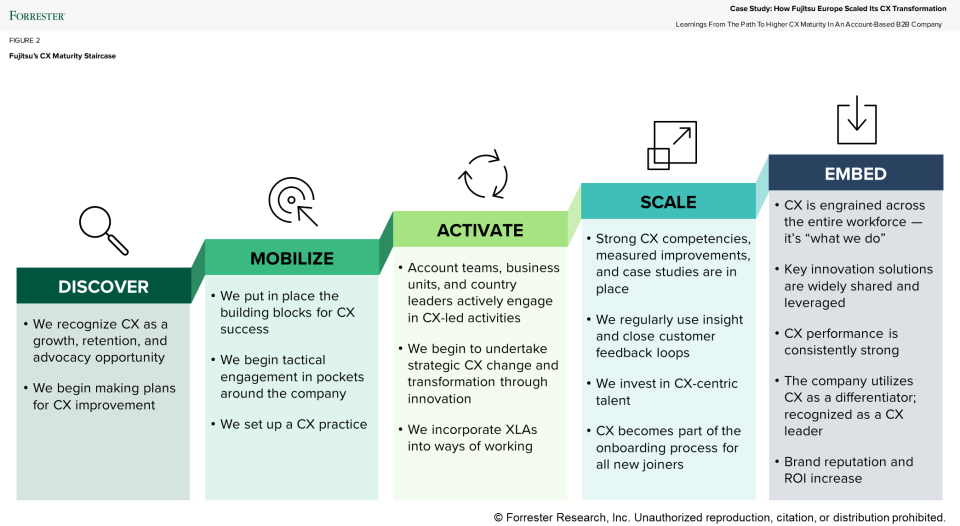Fujitsu CX Transformation: A Comprehensive Case Study for B2B Success
Introduction: The Strategic Importance of Fujitsu CX Transformation in B2B
Fujitsu, a global leader in B2B technology and services, has long emphasized the value of customer experience (CX) in driving business growth and building sustainable client relationships. Recognizing the evolving landscape of customer expectations in the B2B domain, Fujitsu’s European division embarked on a transformational CX journey a few years ago. This initiative sought to establish the company as a trusted partner in digital transformation and create a significant competitive advantage in the market.
This case study explores how Fujitsu Europe tailored and scaled Fujitsu CX transformation strategy, leveraging innovation, collaboration, and customer-centricity to achieve remarkable results.
The Challenge: Scaling CX in a Diverse B2B Environment
Fujitsu faced several challenges common to B2B organizations:
- Cultural Complexity: Fujitsu’s diverse culture and localized ways of working required a tailored approach to CX transformation.
- Alignment with Business Goals: The need to connect CX initiatives with business objectives and ensure cross-functional buy-in.
- Customer Relationships: Building deeper connections with clients beyond traditional feedback mechanisms like Net Promoter Score (NPS).
- Scalability: Developing a CX framework that could be standardized but flexible enough to meet the unique needs of regional teams and diverse customer accounts.
The Four Pillars of Fujitsu’s CX Transformation
- Building CX Expertise, Alignment, and Accountability
To lay the foundation for success, Fujitsu prioritized assembling a team of seasoned CX professionals. The creation of a Customer Experience Performance Center served as the nucleus of the transformation. This team collaborated closely with business experts, ensuring CX strategies were practical and aligned with operational goals.
Key actions:
Formation of a dedicated CX Community to foster collaboration and knowledge sharing.
Establishment of clear CX accountability at all organizational levels.
Appointment of CX champions in leadership roles to drive initiatives and set benchmarks.
- Making CX Tangible for Leaders and Account Teams
Fujitsu recognized that transformation requires both top-down leadership support and bottom-up employee engagement. The company focused on:
Communicating Success Stories: Highlighting measurable outcomes from CX initiatives to inspire buy-in.
Developing Frameworks: Introducing tools like the CX Maturity Staircase to help teams understand current performance and aspirational goals.
Understanding Challenges: Engaging with account teams to identify pain points and demonstrate how CX improvements could address them.
- Standardized Yet Customizable CX Framework
Recognizing the limitations of a “one size fits all” approach, Fujitsu designed a standardized CX framework that could be tailored to regional and customer-specific needs. This framework included:
A common process and toolkit to ensure consistency.
Templates that allowed flexibility for account teams to adapt strategies to their unique contexts.
Scalable systems to streamline implementation across the European region.
- Customer-Centric Co-Creation
Fujitsu shifted its focus from periodic surveys to continuous engagement with customers. By cocreating solutions, the company uncovered actionable insights and strengthened relationships. Key initiatives included:
Collaborating with clients to understand evolving needs.
Jointly designing solutions to address pain points and drive mutual value.
Moving beyond NPS surveys to adopt a more dynamic approach to feedback collection and action.
Results: The Impact of CX Transformation
Fujitsu’s focused approach to CX transformation delivered outstanding results:
NPS Improvement: A nearly 30-point increase in NPS for its core ICT business and a 42-point increase for digital transformation services between 2020 and 2024.
Enhanced Customer Retention: Strong account performance, including higher contract renewals and extensions.
Business Growth: Tangible revenue growth through expanded customer relationships and new opportunities.
These outcomes underscore the transformative power of a customer-centric approach in B2B environments.
Key Learnings for B2B Organizations
Fujitsu’s success offers valuable lessons for other B2B companies:
- Invest in CX Expertise: Bringing in experienced professionals ensures strategic alignment and operational excellence.
- Foster Cross-Functional Collaboration: Embedding CX across teams and functions creates a unified approach to customer satisfaction.
- Engage at All Levels: Leaders must champion CX, and frontline teams must see its value in their daily work.
- Balance Consistency and Flexibility: A robust yet adaptable framework can drive widespread adoption.
- Prioritize Customer-Centricity: Deeply understanding and addressing customer needs builds lasting partnerships.

Conclusion: A Blueprint for B2B Success
Fujitsu’s CX transformation journey exemplifies how a strategic, well-executed approach can redefine customer relationships and drive significant business impact. The company’s focus on expertise, alignment, customization, and collaboration has positioned it as a leader in B2B CX innovation.
As other organizations navigate their CX transformation journeys, Fujitsu’s blueprint serves as a powerful reminder of the potential to create value through customer-centricity.
For more insights into Fujitsu’s approach, explore Forrester’s full report, Case Study: How Fujitsu Europe Scaled Its CX Transformation.

